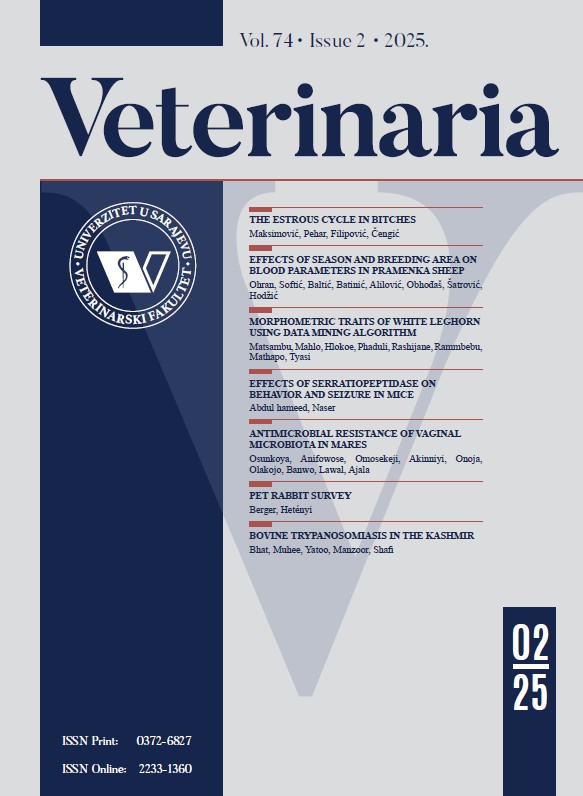Characterization and antimicrobial resistance of vaginal microbiota in mares from Lagos and Oyo States, Nigeria
DOI:
https://doi.org/10.51607/22331360.2025.74.2.179Keywords:
Antimicrobial resistance,, equine reproduction, Nigerian mares, Staphylococcus aureus, vaginal microbiotaAbstract
Despite the importance of microbiota in mammalian reproductive health, research on equine vaginal microbiota remains limited, particularly in tropical regions. The composition of mares’ vaginal microbiota in Lagos and Oyo States, Nigeria is undocumented. Microbiota profiles are essential for developing effective reproductive health management strategies. We aim to characterize vaginal microbiota composition and determine antimicrobial resistance profiles of isolated bacteria in mares from Lagos and Oyo States, Nigeria. Vaginal swabs from 81 apparently healthy mares, comprising Nigerian indigenous breeds, Sudanese breeds, and Argentine Polo Ponies, were collected using sterile guarded culture swabs. Samples underwent bacterial isolation on selective and differential media including Trypticase soy, Mannitol salt, Eosine methylene blue, Muller-Hinton, Salmonella-shigella, and MacConkey agar. Bacterial identification involved morphological and biochemical tests including oxidase, catalase, motility, Gam staining, and sugar fermentation. Antimicrobial susceptibility was tested against 18 antimicrobials using the Kirby-Bauer disk diffusion method following CLSI standards. Analysis revealed distinct bacterial distribution patterns between locations. Of 81 samples, Staphylococcus aureus dominated (58.0%), while Pseudomonas aeruginosa and Staphylococcus epidermidis each represented 1.2%, 30.9% showed no growth. Biochemical characterization demonstrated typical profiles for each species. S. aureus showed complete sensitivity to imipenem and streptomycin but resistance to cefuroxime, penicillin-streptomycin, enrofloxacin, ciprofloxacin, and metronidazole. P. aeruginosa was sensitive to clindamycin and imipenem while resistant to most other antibiotics. Given the high presence of drug-resistant S. aureus, veterinarians should prioritize aminoglycosides and carbapenems for treating mare vaginal infections, using other antibiotics only with susceptibility testing guidance.

Downloads
Published
How to Cite
Issue
Section
License
Copyright (c) 2025 Dideolu Osunkoya, Olayinka Anifowose, Linda Omosekeji, Olumide Akinniyi, Moyinoluwa Onaja, Tolulope Olakojo, Olamilekan Banwo, Taiwo Lawal, Oluwatoyin Ajala

This work is licensed under a Creative Commons Attribution 4.0 International License.







